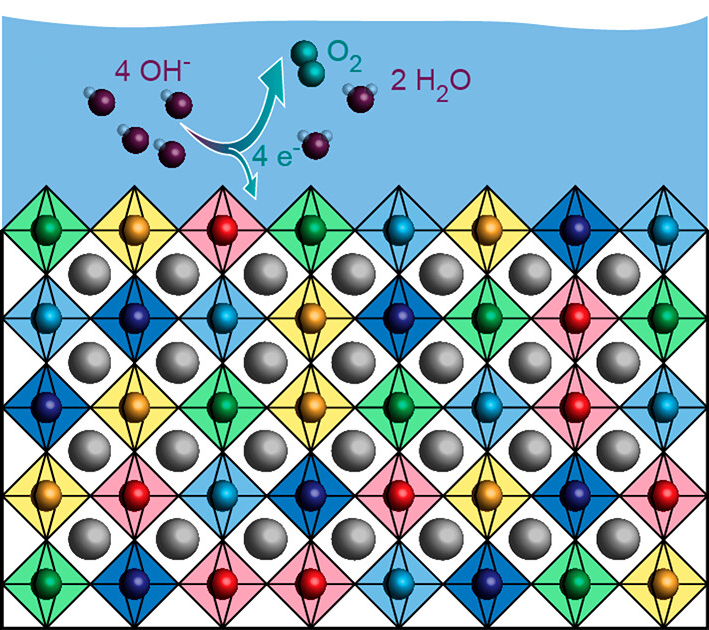Hydrogen is an effective carrier of energy, offering a way to store energy for long periods. “Green” hydrogen is produced using renewable energy, usually through the splitting (electrolysis) of water molecules, which requires a lot of rare and expensive materials.
“Currently, the most efficient electrolyzers contain platinum and iridium, which are needed for the electrodes on which the hydrogen and oxygen gas are produced from water,” said Unversity of Twente researcher Chris Baeumer. “However, platinum and especially iridium are too rare. That’s why we’re constantly looking for electrode materials made from more abundant resources which also can be used as efficient and stable electrocatalysts.”
The researchers found what they were looking for in a lanthanum-based oxide—a perovskite-structured compound with five different transition metals (Cr, Mn, Fe, Co, and Ni) in the perovskite B-sites (i.e., inside characteristic eight-sided oxygen “cages”). Individually, the five transition metals are only moderately active as catalysts. Combined, however, they outperform similar compounds that have a single transition metal by a factor of up to 680.
Ambient-pressure x-ray photoelectron spectroscopy (APXPS) at Advanced Light Source (ALS) Beamline 9.3.2 showed that, upon adsorption of reaction intermediates, several of the transition metals exhibit a simultaneous valence change, which may be the cause of the enhanced activity.
“We expected that the stability compared to traditional composites would be enhanced, but when we started testing, it soon turned out that the activity was much higher too,” said Baeumer. “In collaboration with our partners from Karlsruhe (Germany) and Berkeley, we found that the individual transition metals may ‘help’ each other to make the combined material better than the sum of its parts in a so-called synergy effect.”
Combining the five components is complex, however, and the results have only been tested in the lab. “We’re comparing a newly discovered composite to materials optimized for large-scale production, meaning that our new material still needs to be tested on the industrial scale,” said University of Twente postdoc Shu Ni, who is leading future developments for materials optimization. “However, with some tweaking and further research, this combination of transition metals has the potential to outperform currently available alternatives.”

M.V. Kante, M.L. Weber, S. Ni, I.C.G. van den Bosch, E. van der Minne, L. Heymann, L.J. Falling, N. Gauquelin, M. Tsvetanova, D.M. Cunha, G. Koster, F. Gunkel, S. Nemšák, H.Hahn, L. Velasco Estrada, and C. Baeumer, “A High-Entropy Oxide as High-Activity Electrocatalyst for Water Oxidation,” ACS Nano 17, 5329 (2023), doi:10.1021/acsnano.2c08096.
Adapted from the University of Twente press release, “New Material to Create Green Hydrogen.”